Trees Birds Mammals Fish Amphibians Reptiles
Wild Algarve
Bookshop
Russula sardonia Fr. - Primrose Brittlegill
Phylum: Basidiomycota - Class: Agaricomycetes - Order: Russulales - Family: Russulaceae
Distribution - Taxonomic History - Etymology - Identification - Culinary Notes - Reference Sources
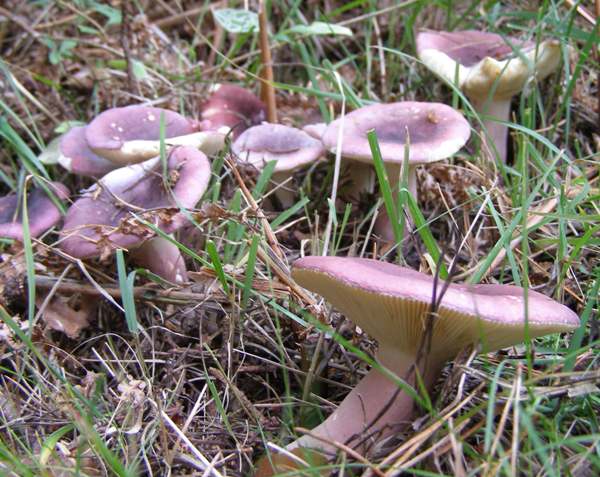
These brittlegills have primrose gills that turn golden yellow with age. The specimens shown above have emerged in wet weather and already slugs have taken chunks out of their caps.
Distribution
Very common and widespread throughout Britain and Ireland and most of mainland Europe. This brittlegill occurs also in parts of North America.
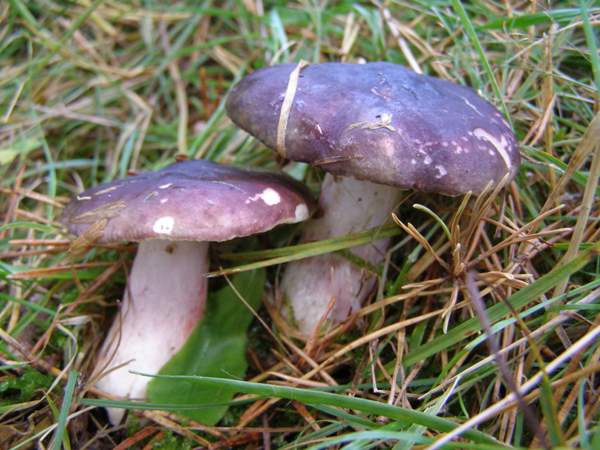
Taxonomic history
The Primrose Brittlegill was given its current scientific name Russula sardonia in 1838 by the great Swedish mycologist Elias Magnus Fries.
Russula sardonia has many synonyms including Russula sardonia var. citrina Pers., Russula drimeia Cooke, Russula chrysodacryon Singer, Russula sardonia var. mellina Melzer, Russula chrysodacryon f. viridis Singer, Russula drimeia var. flavovirens Rea, Russula emeticiformis Murrill, and Russula drimeia f. viridis (Singer) Bon.
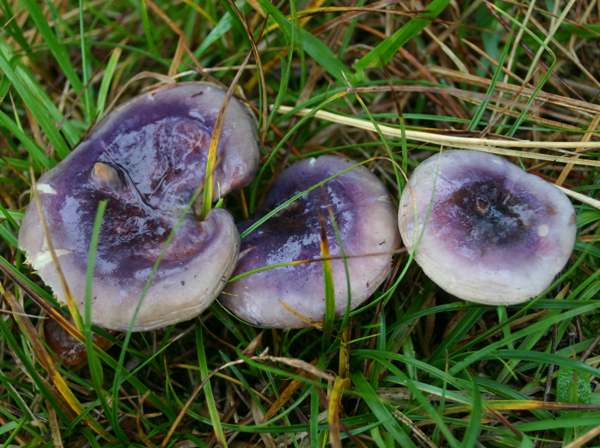
Etymology
Russula, the generic name, means red or reddish, and indeed many of the brittlegills have red caps (but many more are not, and several of those that are usually red can also occur in a range of other colours!). The specific epithet sardonia comes from Greek and means bitter or acrid - a reference to the hot peppery taste of this mushroom.
Identification guide
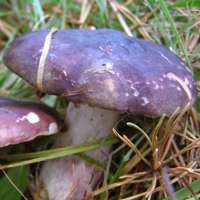 |
Cap
5 to 10cm across; convex, flattening and developing a central depression; hardly peeling at all; usually reddish-puple with a darker purple (sometimes almost black) centre, but sometimes with violet, green (form viridis) or grey tints; fading with age. Occasionally found with a lemon to ochre-yellow cap (form mellina). |
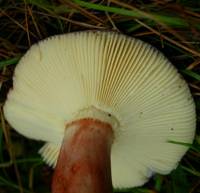 |
Gills
Adnexed or very slightly decurrent; pale lemon to primrose yellow at first, becoming golden yellow and finally browning at the edges. When a cap develops a central depression at maturity, the gills sometimes tear away from the stem.
Stem
White at the base, the stem of Russula sardonia is flushed lilac to wine-red above; cylindrical or tapering slightly at base; 5 to 8cm long, 1.0 to 1.6cm dia. |
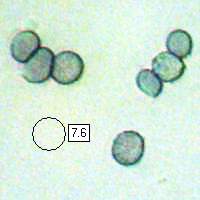 |
Spores
Ovoid; 7–9 x 5.8–8µm; with warts up to 0.6µm tall, joined to form a partial reticulum (network) via a combination of ridges and fine connective lines.
Spore print
Cream. |
Odour/taste |
Fruity odour; very hot taste - so hot that I think you are unlikely to want to try taste testing red- or purple-stemmed brittlegills except as a last resort! |
Habitat & Ecological role |
In coniferous woodland, particularly under pines. In common with other members of the Russulaceae, Russula sardonia is an ectomycorrhizal mushroom. |
Season |
July to October in Britain and Ireland. |
Similar species |
Russula atropurpurea the Purple Brittlegill, has a white stem. |
Culinary Notes
Although some sources say that despite its super-hot peppery taste the Primrose Brittlegill is edible, many authorities state that it is suspect and could cause stomach upsets.
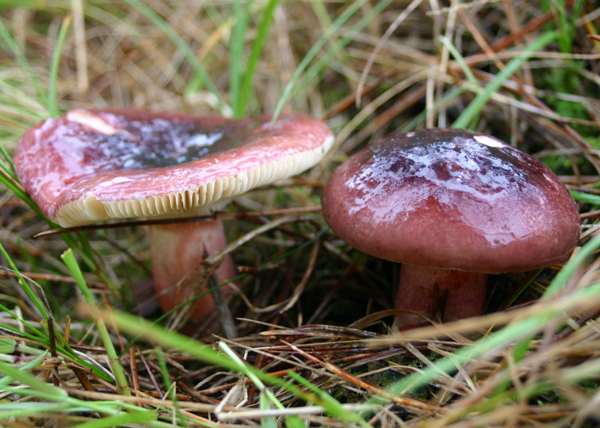
Reference Sources
Fascinated by Fungi, 2nd Edition, Pat O'Reilly 2016, reprinted by Coch-y-bonddu Books in 2022.
The Genus Russula in Great Britain, Geoffrey Kibby 2011.
Dictionary of the Fungi; Paul M. Kirk, Paul F. Cannon, David W. Minter and J. A. Stalpers; CABI, 2008
Taxonomic history and synonym information on these pages is drawn from many sources but in particular from the British Mycological Society's GB Checklist of Fungi.
Top of page...
Fascinated by Fungi. Back by popular demand, Pat O'Reilly's best-selling 450-page hardback book is available now. The latest second edition was republished with a sparkling new cover design in September 2022 by Coch-y-Bonddu Books. Full details and copies are available from the publisher's online bookshop...